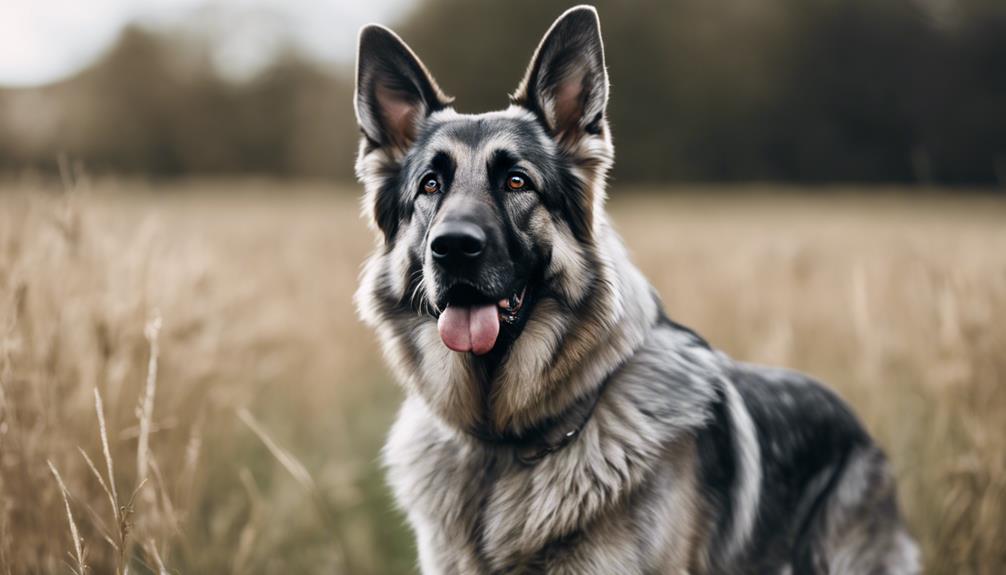🐾 Paw-some Partnership Alert! 🐾
As a pack of German Shepherd enthusiasts at MixGermanShepherd.com, we're always sniffing out the best products for our furry friends. Guess what? When you fetch something from Amazon through our links, we earn a little treat! 🦴
If you've ever wondered about the fascinating world of Silver German Shepherds, you'll find that their mysterious silver sable coat color is just the beginning of what makes them stand out. These majestic canines possess a rich history and a range of characteristics that set them apart from their traditional counterparts. Explore how their unique genetics influence not only their appearance but also their temperament and health. Discover the secrets behind the allure of these stunning creatures and why they continue to capture the hearts of dog lovers worldwide.
Key Takeaways
- Silver German Shepherds have a genetic origin in Germany with a recessive silver coat color gene.
- Their temperament, training needs, and health are not altered by the silver coat color.
- Grooming requirements for Silvers include daily care and additional attention to their long coat.
- Show dogs can be registered with the AKC under the black and silver designation and require specific grooming for exhibitions.
Origin of Silver German Shepherds
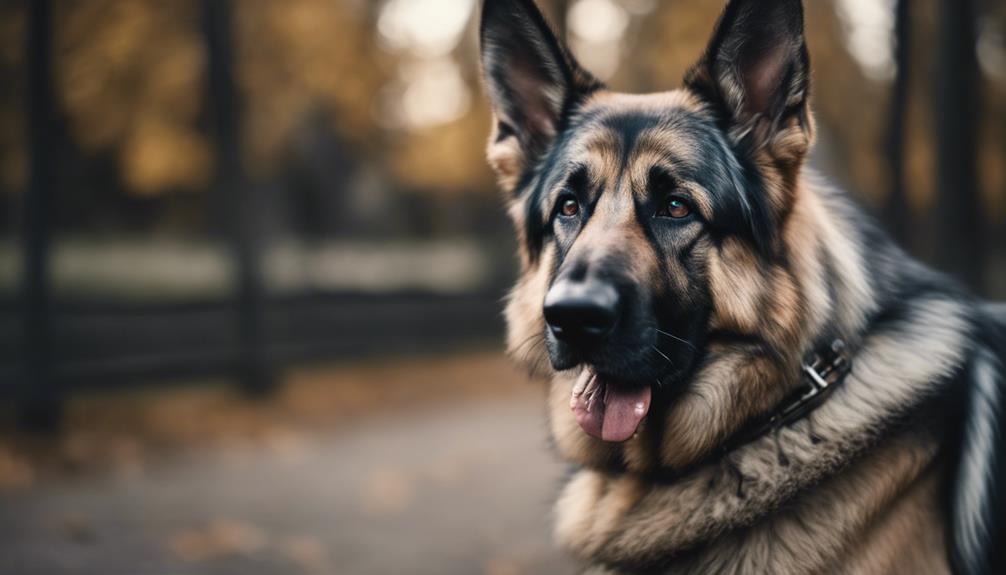
The evolution of Silver German Shepherds traces back to their shared origins in Germany, alongside other German Shepherd Dogs. Max von Stephanitz, a Cavalry Officer, played a pivotal role in the development of the German Shepherd Dog breed over 35 years. Originally bred for herding, German Shepherds transitioned into service, police, and military roles due to their intelligence and versatility.
Within the German Shepherd breed, the silver color gene is believed to be a recessive trait, contributing to its rarity among these dogs. Coat color genetics in German Shepherds are intricate, with the silver color genes still not fully understood. It is observed that working dogs, which are often used in demanding roles, display more color variation compared to show dogs. The sable color gene, known for its dominance, is prevalent among German Shepherds used for work.
The historical journey of German Shepherds showcases a shift from herding to multifunctional roles, with the silver coat color standing out as a unique and relatively uncommon trait. Understanding the genetic basis of color variations in German Shepherds, especially the elusive silver gene, remains a subject of ongoing research within the realm of canine genetics.
Genetics Behind Silver Coat Color
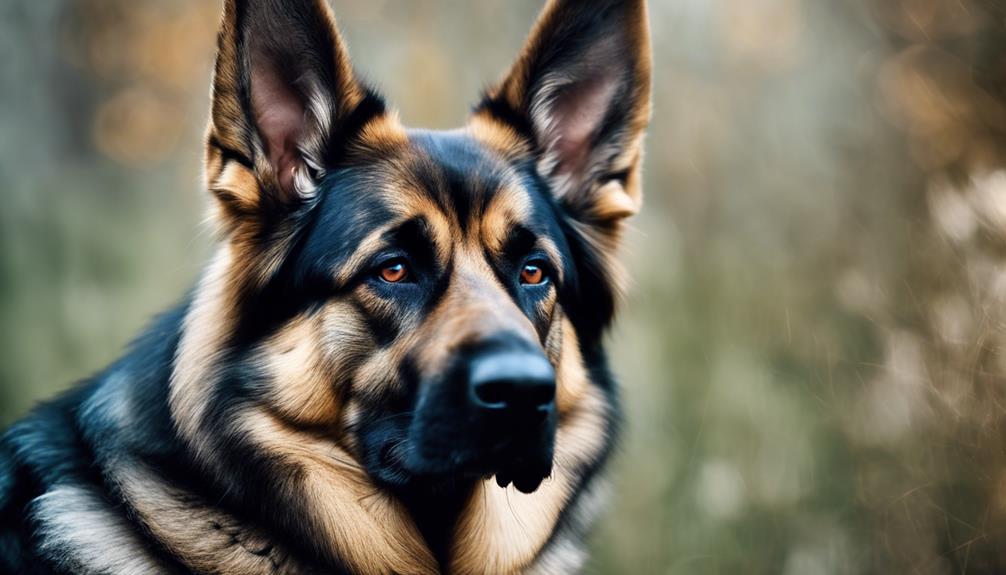
Originating from the intricate genetics of the German Shepherd breed, the silver coat color manifests through a recessive gene mutation. This unique genetic makeup influences the appearance of the silver German Shepherd puppy in the following ways:
- Recessive Gene: The silver coat color is controlled by a recessive gene, meaning that both parent dogs must carry this gene to have a chance of producing silver offspring.
- Genetic Testing: Through genetic testing, breeders can determine if a German Shepherd carries the silver gene, aiding in selective breeding practices.
- Inheritance Patterns: Understanding specific gene combinations and inheritance patterns is crucial in predicting the likelihood of producing silver coat color in German Shepherds.
- Parent Dogs: The coat color genes of the parent dogs play a significant role in determining the presence of the silver gene in their offspring.
Silver German Shepherd Appearance Traits

Silver German Shepherds exhibit a distinct off-tan coloration due to a genetic modifier affecting their red or tan hairs. Their athletic build showcases well-defined muscles and a robust bone structure typical of the breed. The dense double coat, domed forehead, and distinctive head shape are key physical traits of the Silver German Shepherd.
Coat Color
In the genetics of Silver German Shepherds, their coat coloration results from a unique modifier on red or tan hairs, creating an off-tan hue ranging from cream to off-white. This silver appearance is a result of a recessive gene mutation, requiring both parents to carry the gene for silver coat color. Genetic testing can confirm the presence of the silver gene in these dogs. When it comes to conformation shows, judges may penalize silver dogs for not conforming to the preferred colors, but they can still participate in exhibitions to showcase their structure, movement, and temperament.
- Unique Coat Color: Off-tan hue ranging from cream to off-white.
- Recessive Gene Mutation: Both parents must carry the gene for silver coat color.
- Genetic Testing: Can confirm the presence of the silver gene.
- Conformation Shows: Silver dogs may face penalties but can still exhibit their qualities.
Size and Build
The size and build of Silver German Shepherds adhere to the breed's standard specifications, with typical weights ranging between 50-90 pounds and heights standing at 22-26 inches. These dogs often exhibit a black saddle pattern on their backs, with the silverback pattern being less common. Their double coat, a prominent feature, necessitates regular grooming to manage shedding, with long coats being a recessive trait in this breed. Silver long-haired German Shepherds are infrequent due to the recessive nature of the long coat gene. The athletic build of Silver German Shepherds includes well-defined muscles, a robust bone structure, and a distinct head with a domed forehead, adding to their characteristic appearance in line with the German Shepherd breed standards.
Grooming Requirements for Silvers
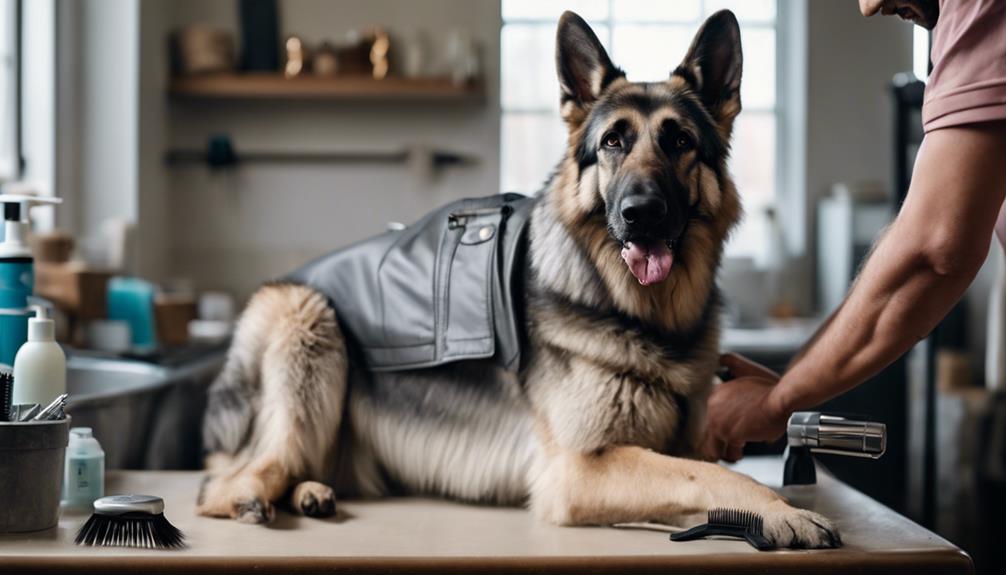
Regular brushing is essential for managing the shedding of Silver German Shepherds due to their double coat. To properly care for your Silver German Shepherd's coat, follow these grooming requirements:
- Brushing: Daily brushing is recommended to prevent matting and remove loose fur.
- Bathing: Bathe your Silver German Shepherd as needed using a dog-specific shampoo to keep their coat clean and healthy.
- Trimming: Regularly trim your Silver's nails to prevent overgrowth and potential discomfort.
- Checking Ears and Eyes: Inspect and clean your Silver's ears and eyes regularly to prevent infections or irritations.
The long coat gene in Silver German Shepherds is less common, but if your Silver has a long coat, additional grooming may be necessary to prevent tangles and matting. The silver coloration on their coat, often accompanied by a black saddle pattern covering most of their back, adds to their unique appearance but requires attentive grooming to maintain its luster. Remember, regular grooming sessions are not only vital for your Silver German Shepherd's appearance but also contribute to their overall health and well-being.
Color Influence on Temperament
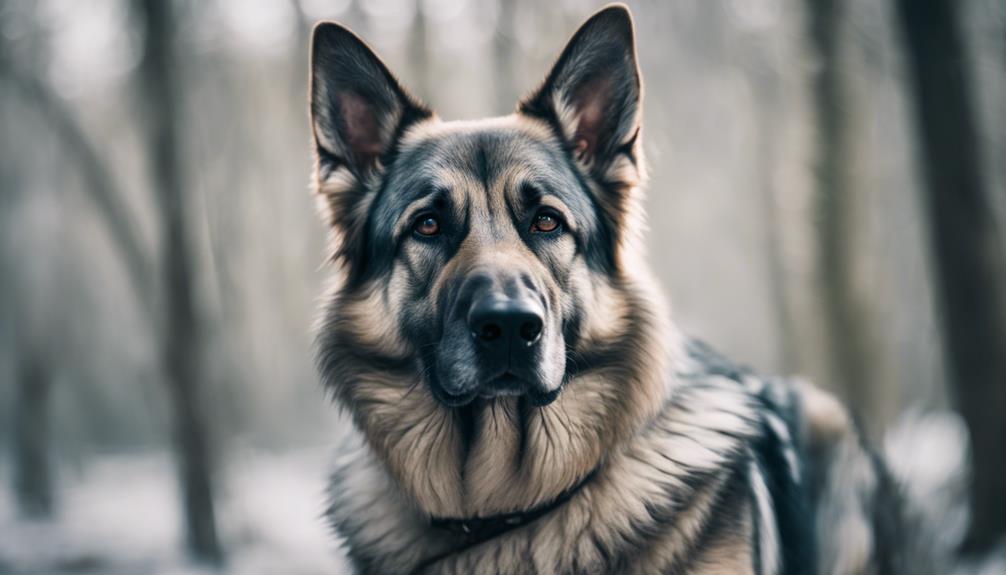
The color of a silver coat in German Shepherds does not alter their fundamental temperament traits, such as intelligence, loyalty, and bravery. Despite their unique coloring, silver German Shepherds still exhibit the breed's characteristic behaviors, including bonding strongly with their families and being protective yet reserved around strangers. Understanding the genetic basis of color variation in German Shepherds can help clarify that coat color does not directly affect their core temperament attributes.
Color and Behavior Correlation
In the evaluation of Silver German Shepherds, their coat color does not directly correlate with their temperament or behavior. Despite the unique silver hue, these dogs exhibit typical German Shepherd breed traits consistently. When considering color and behavior in Silver German Shepherds, remember:
- Coat color variations have no bearing on inherent loyalty or intelligence.
- Temperament traits like protectiveness are not affected by the silver coat color.
- Behavioral characteristics are primarily influenced by genetics and individual personality.
- Socialization, training, and environment play a more significant role in shaping behavior than coat color.
Silver Coat Impact
Color variations in Silver German Shepherds do not influence their inherent temperament traits, maintaining consistency in intelligence, loyalty, and protective instincts. The silver sable coat color, controlled by a specific gene, does not alter the fundamental characteristics of German Shepherds. Despite their unique appearance, Silver German Shepherds exhibit the same high level of intelligence that the breed is known for. Their loyalty to their families remains unwavering, making them excellent companions and protectors. Additionally, their protective instincts are not compromised by their coat color variation, ensuring they can still excel in roles such as working dogs or family guardians. In essence, the silver coat of these German Shepherds is just a beautiful outer layer, with no impact on their core temperament traits.
Temperament Traits Analysis
Analysis of temperament traits in Silver German Shepherds reveals no discernible influence from their unique silver coat color, underscoring the breed's consistent behavioral characteristics across variations. Despite their striking appearance, silver German Shepherds exhibit the same intelligence, loyalty, and bravery commonly associated with the breed. They form strong bonds with their families, are generally good with children, yet can display aloofness towards strangers. Regular exercise and mental stimulation are crucial for maintaining their well-being and preventing behavioral issues. Positive, reward-based training methods are highly effective due to their innate intelligence and eagerness to learn. The silver coloration does not alter their temperament, highlighting the breed's unwavering traits regardless of coat color.
- Loyalty: Silver German Shepherds form strong bonds with their families.
- Bravery: They exhibit bravery typical of the German Shepherd breed.
- Aloofness: Silver German Shepherds may show aloofness towards strangers.
- Training Methods: Positive, reward-based training is effective due to their intelligence.
Training and Exercise Needs

Consistently incorporating training routines and providing regular exercise are essential for ensuring the optimal development and well-being of Silver German Shepherds. Training Silver German Shepherds should focus on positive reinforcement methods, as they are highly receptive to learning and responding well to encouragement. Utilizing positive reinforcement not only enhances obedience but also strengthens the bond between you and your Silver German Shepherd. In addition to training, engaging in mental stimulation activities is crucial to prevent behavioral issues. These intelligent dogs thrive on challenges that keep their minds active and engaged.
Socialization plays a vital role in shaping the behavior of Silver German Shepherds. Early exposure to various people, animals, and environments helps them become well-rounded and adaptable companions. Ensuring consistency in training and socialization efforts is key to fostering good behavior in Silver German Shepherds. Regular exercise is equally important for these active and agile dogs to maintain their muscle tone, prevent boredom, and promote overall health.
| Aspect | Importance |
|---|---|
| Training | Essential for obedience |
| Exercise | Vital for physical health |
| Positive Reinforcement | Effective training method |
| Socialization | Shapes good behavior |
Health Concerns in Silver Shepherds
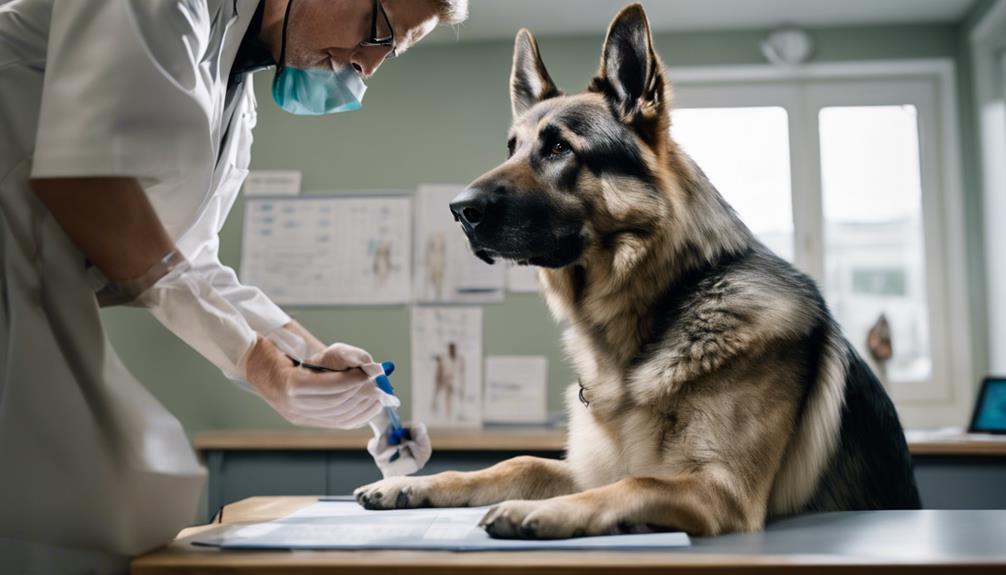
Silver German Shepherds commonly face various health concerns, including hip dysplasia, elbow dysplasia, OCD, degenerative myelopathy, and bloat. Responsible breeding practices involve health tests for parent dogs to reduce the risk of inherited conditions in Silver German Shepherds. Back problems are common in German Shepherds due to conformation issues, emphasizing the importance of prioritizing overall health and temperament over coat color preferences. Show dogs with a sloped back can face welfare issues, highlighting the significance of selecting dogs based on health and temperament rather than coat color. Regular veterinary check-ups, a balanced diet, exercise, and special care for sensitive skin are crucial for maintaining the health of Silver German Shepherds.
Silver German Shepherds are predisposed to certain health issues, making it essential for owners to be vigilant about their well-being. Responsible breeding practices play a critical role in mitigating the risk of inherited conditions. Back problems are prevalent in this breed due to conformational factors, underscoring the need to prioritize health and temperament above aesthetics. Show dogs with a sloped back may encounter welfare concerns, emphasizing the importance of focusing on health and behavior rather than coat color. Regular veterinary check-ups, proper nutrition, exercise, and attention to sensitive skin are key components of caring for Silver German Shepherds.
Registration and Showing Guidelines
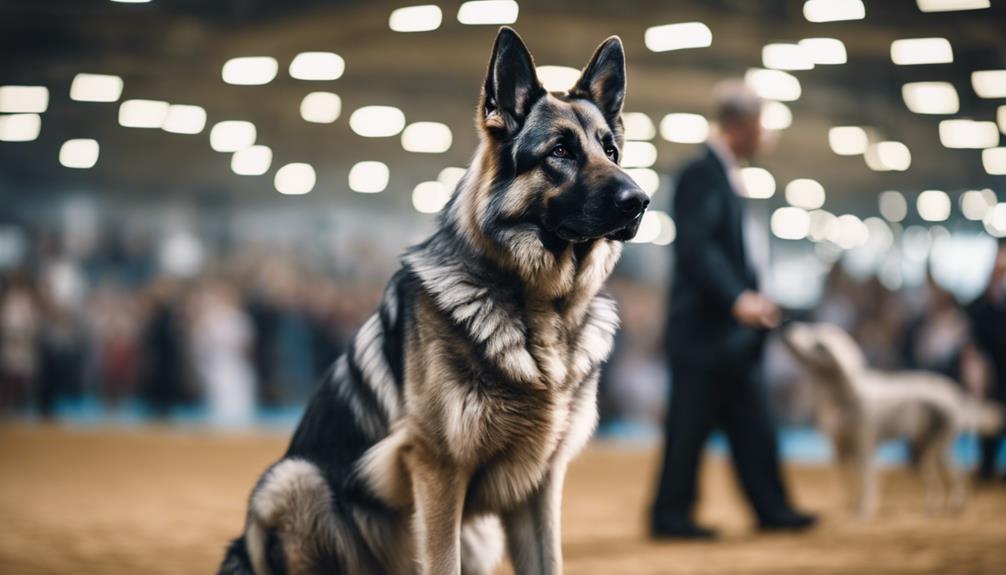
When considering the participation of Silver German Shepherds in conformation exhibitions, it is important to register them with the American Kennel Club (AKC) as black and silver dogs. The AKC guidelines distinguish between coat variations, specifically black and silver versus black and cream, in show circuits. In these exhibitions, judges assess the dogs based on their structure, movement, and adherence to breed standards. It is crucial to note that judges may penalize silver dogs for deviating from the preferred colors. To excel in conformation shows, proper grooming, training, and exercise are essential for showcasing the beauty of Silver German Shepherds.
| Aspect | Description |
|---|---|
| Registration | Register as black and silver dogs with AKC. |
| Conformation | Participate in exhibitions evaluating structure, movement, and adherence to standards. |
| Grooming | Maintain proper grooming practices to enhance appearance. |
| Training | Engage in consistent training to showcase behavior and obedience. |
| Exercise | Ensure regular exercise to maintain fitness and agility for show performance. |
Frequently Asked Questions
How Big Do Silver German Shepherds Get?
Silver German Shepherds typically weigh between 50-90 pounds when fully grown, standing at 22-26 inches tall. Their size falls within the standard range for the breed. Proper nutrition and exercise are essential for maintaining their ideal size and weight.
How Do I Know What Breed My German Shepherd Is?
To identify your German Shepherd's breed, examine coat variations, consider genetic testing, and compare to breed standards. Look for distinctive coat patterns, note health concerns, assess temperament traits, delve into breeding practices, and explore historical background.
What Is the Most Expensive German Shepherd Color?
The most expensive German Shepherd color is typically the silver or silver sable coat due to rare genetics, market demand, and unique traits. Breeders follow strict breeding standards, genetic testing, and consider color inheritance factors.
How Can You Tell What Color Your German Shepherd Will Be?
To predict your German Shepherd's color, analyze coat genetics and pigment inheritance. Consider both parents' genes for accurate predictions. Breeders use genetic testing and lineage analysis to forecast coat variations in puppies, including the rare silver gene.
Conclusion
In conclusion, the silver German Shepherd breed offers a fascinating glimpse into the world of genetic diversity in canine populations. Like a silver thread woven through the fabric of dog breeding, these unique dogs stand out for their striking appearance and unwavering loyalty. Just as a rare gem shines brightly among the ordinary, silver German Shepherds illuminate the potential for beauty and distinction in the realm of dog breeds.
